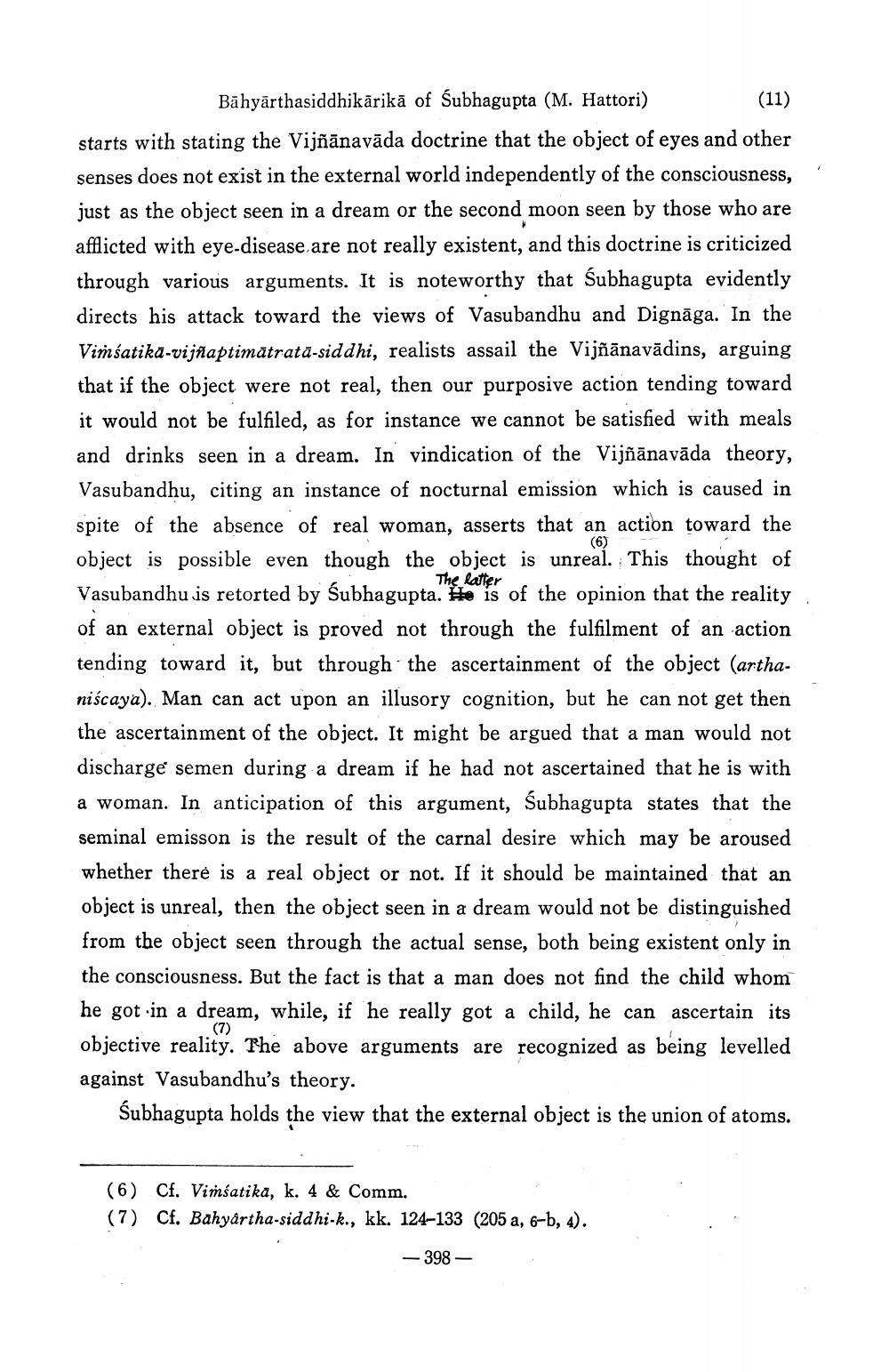________________
(6)
Bāhyārthasiddhikārikā of Subhagupta (M. Hattori)
(11) starts with stating the Vijñānavāda doctrine that the object of eyes and other senses does not exist in the external world independently of the consciousness, just as the object seen in a dream or the second moon seen by those who are afflicted with eye-disease are not really existent, and this doctrine is criticized through various arguments. It is noteworthy that Subhagupta evidently directs his attack toward the views of Vasubandhu and Dignāga. In the Vimśatika-vijñaptimātrata-siddhi, realists assail the Vijñānavādins, arguing that if the object were not real, then our purposive action tending toward it would not be fulfiled, as for instance we cannot be satisfied with meals and drinks seen in a dream. In vindication of the Vijñānavāda theory, Vasubandhu, citing an instance of nocturnal emission which is caused in spite of the absence of real woman, asserts that an action toward the object is possible even though the object is unreal. This thought of
The latter Vasubandhu is retorted by Subhagupta. He is of the opinion that the reality of an external object is proved not through the fulfilment of an action tending toward it, but through the ascertainment of the object (arthaniścaya). Man can act upon an illusory cognition, but he can not get then the ascertainment of the object. It might be argued that a man would not discharge semen during a dream if he had not ascertained that he is with a woman. In anticipation of this argument, Subhagupta states that the seminal emisson is the result of the carnal desire which may be aroused whether there is a real object or not. If it should be maintained that an object is unreal, then the object seen in a dream would not be distinguished from the object seen through the actual sense, both being existent only in the consciousness. But the fact is that a man does not find the child whom he got.in a dream, while, if he really got a child, he can ascertain its objective reality. The above arguments are recognized as being levelled against Vasubandhu's theory.
śubhagupta holds the view that the external object is the union of atoms.
(7)
(6) Cf. Vimšatika, k. 4 & Comm. (7) Cf. Bahyârtha-siddhi-k., kk. 124-133 (205 a, 6-b, 4).
- 398 -




